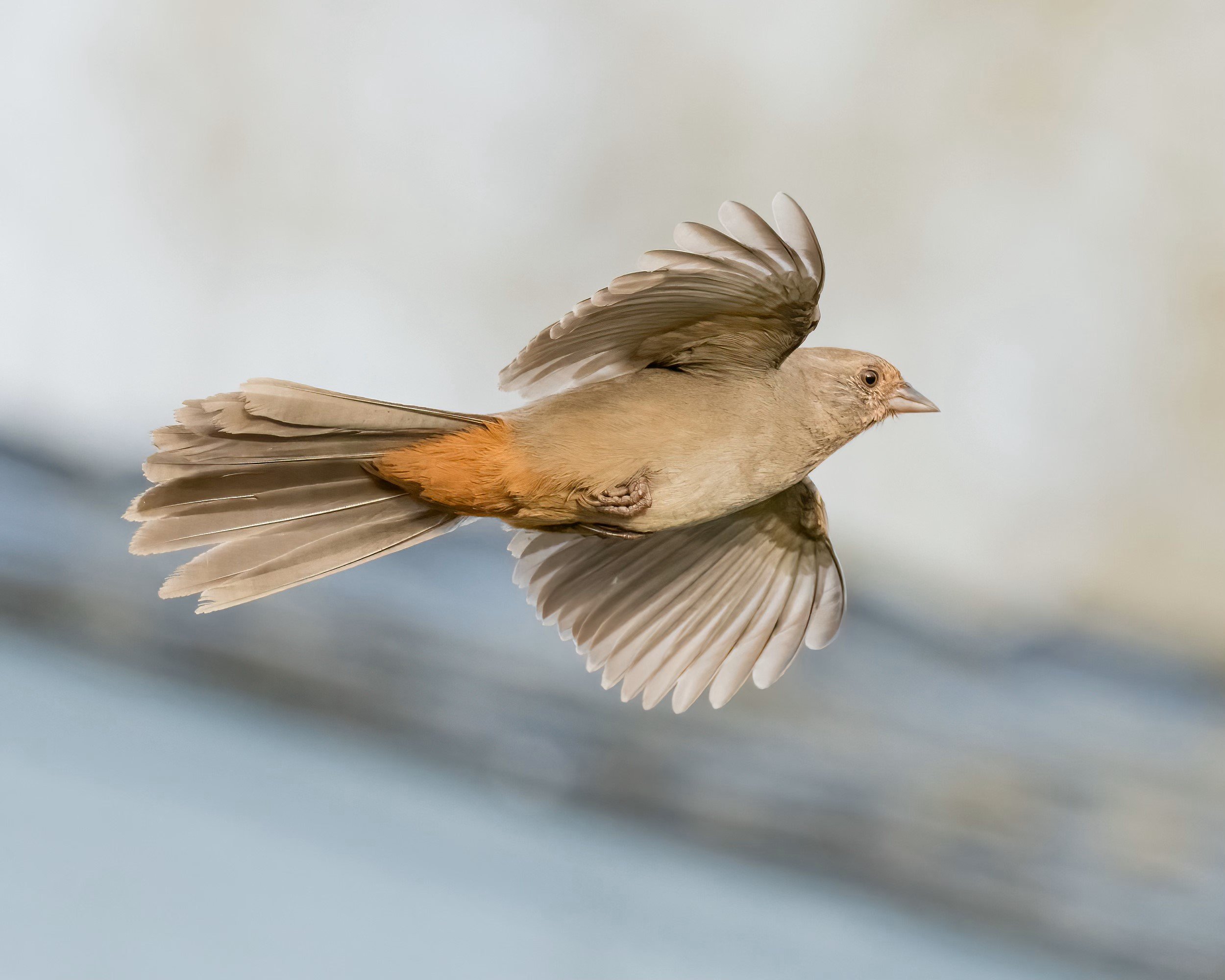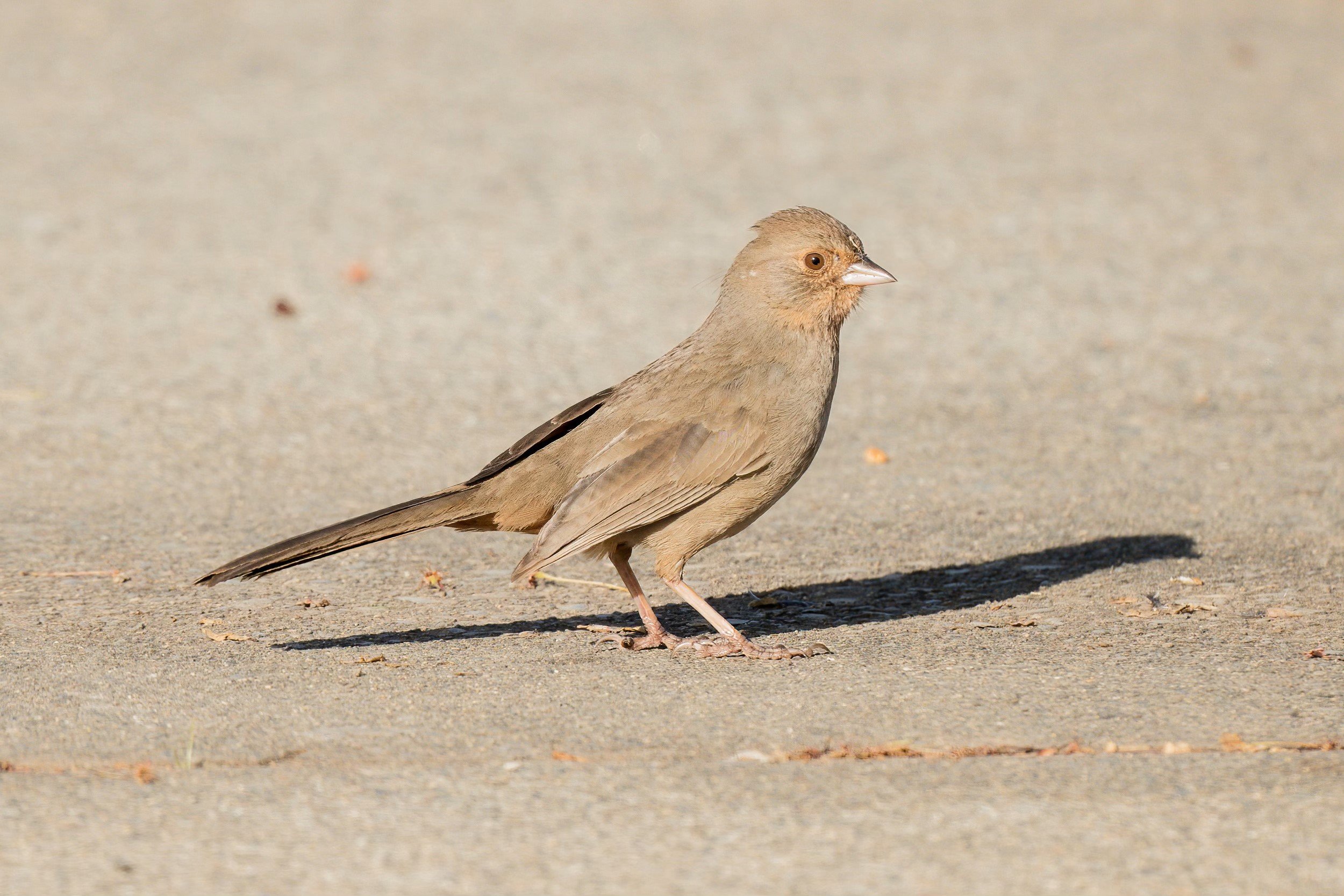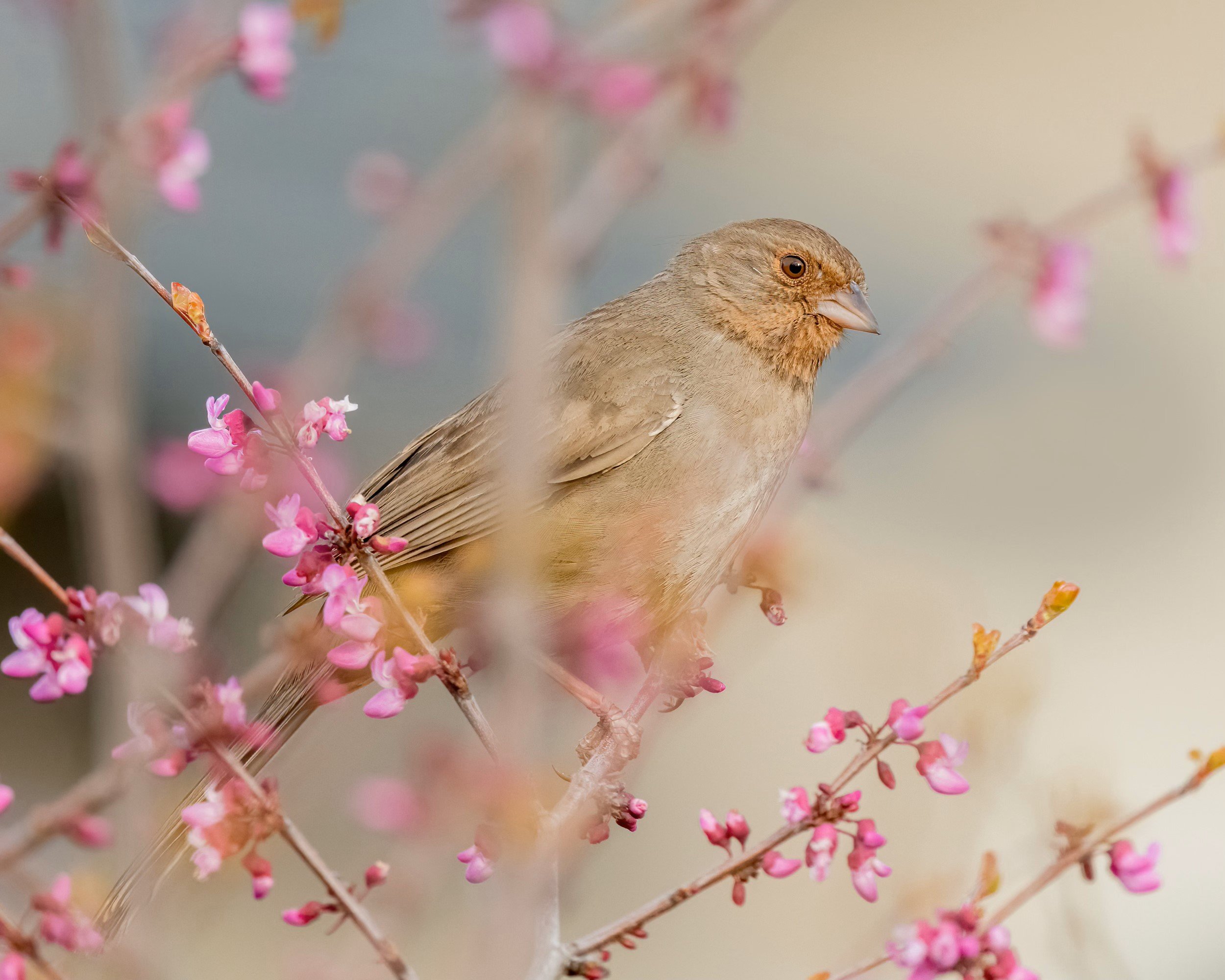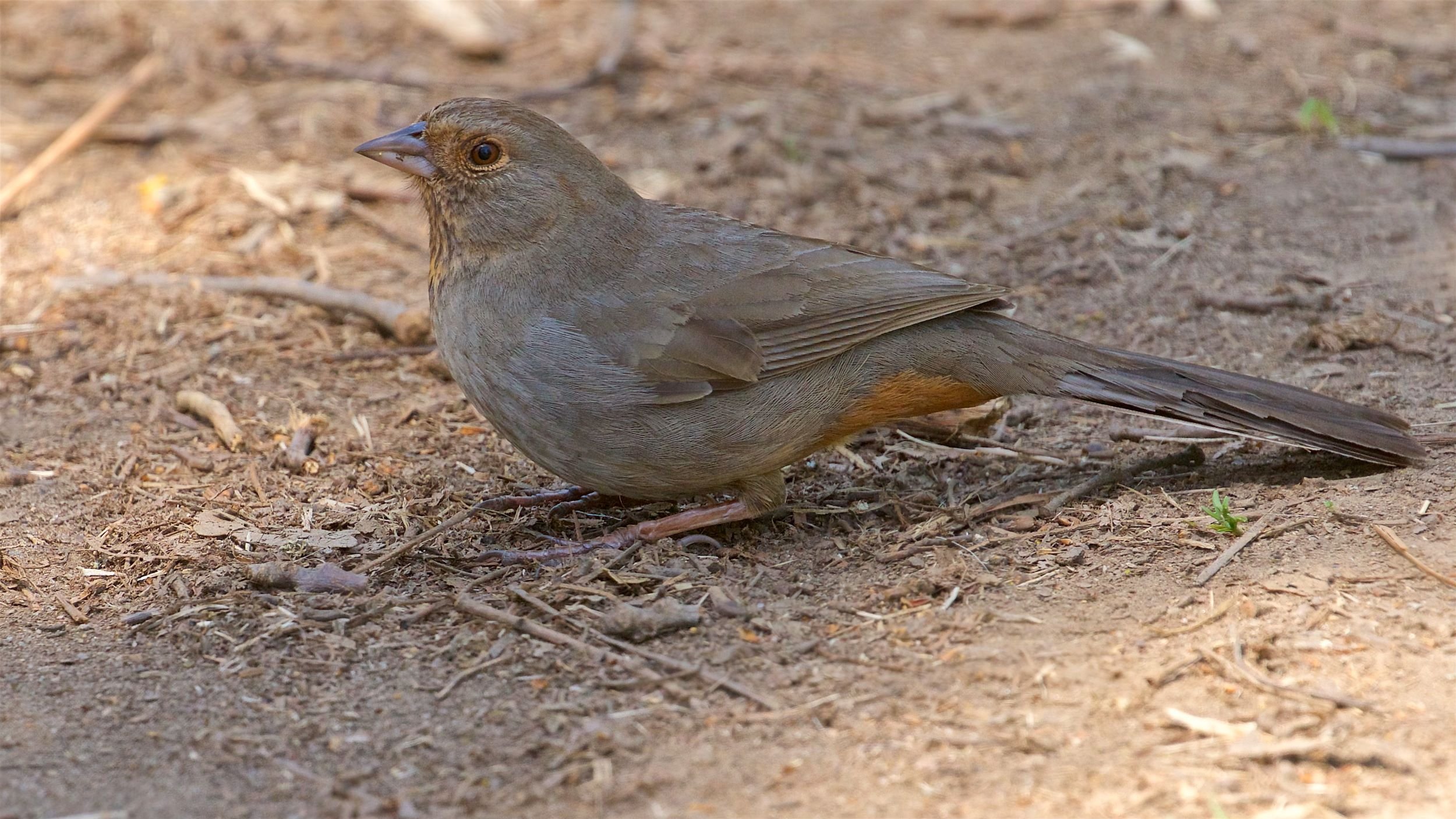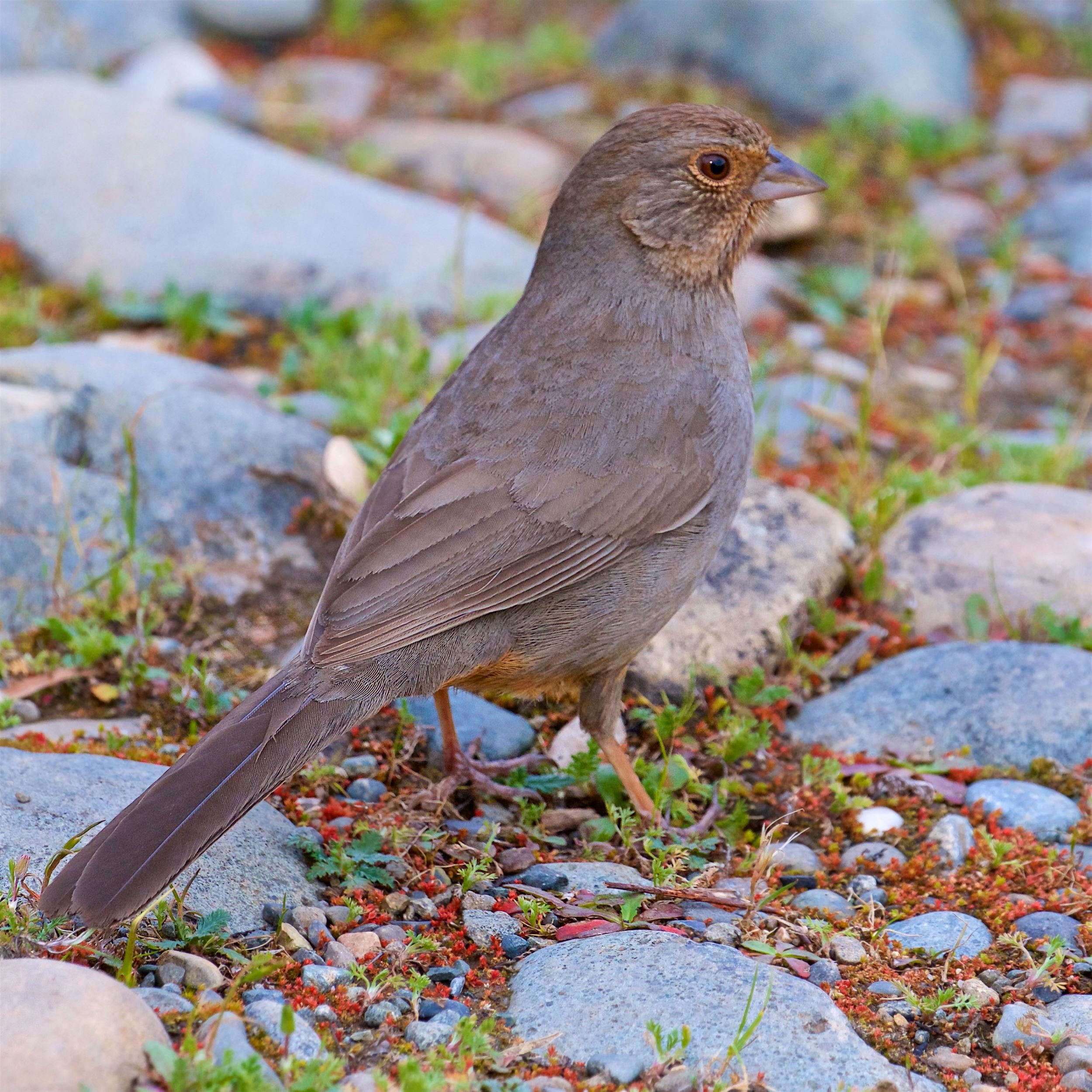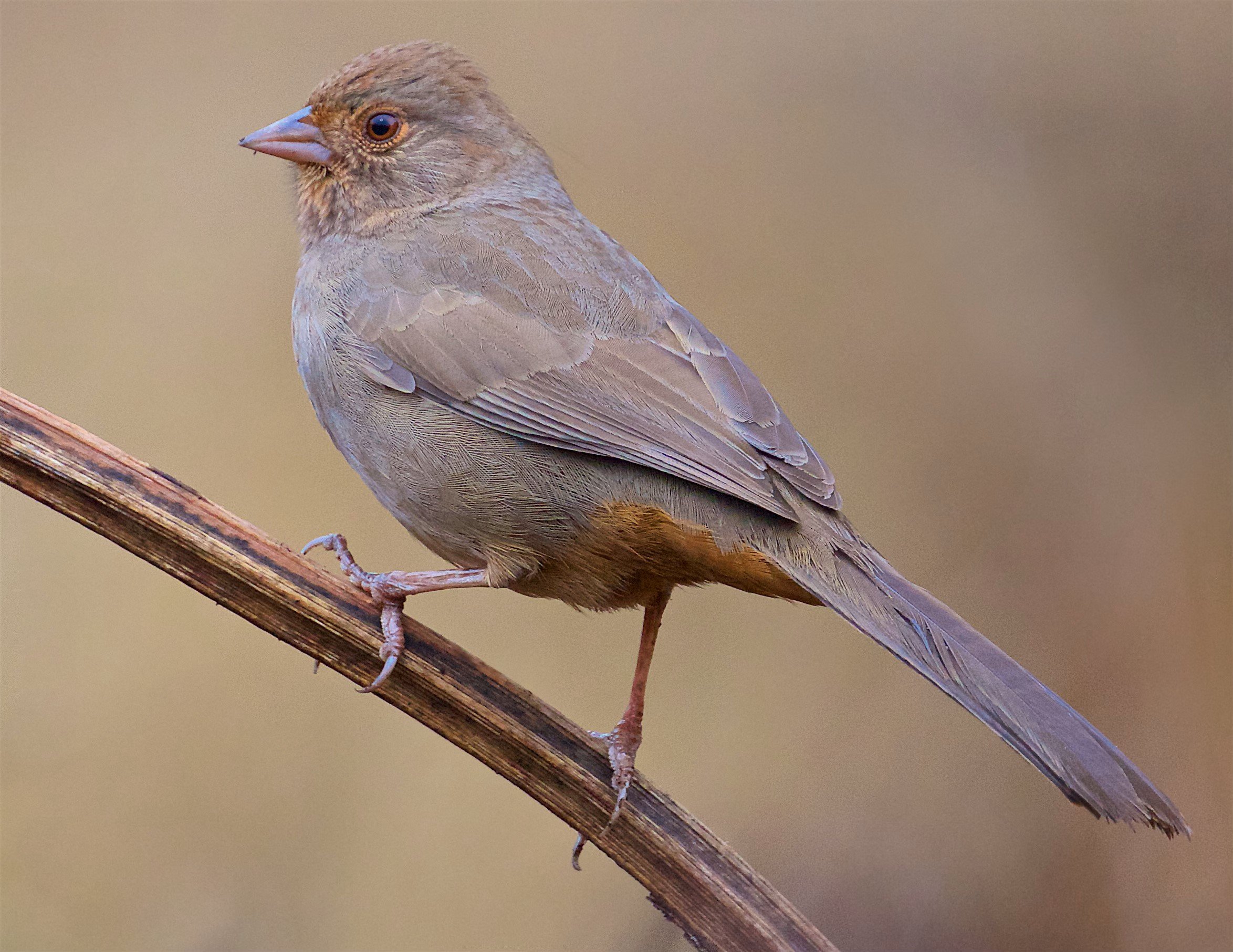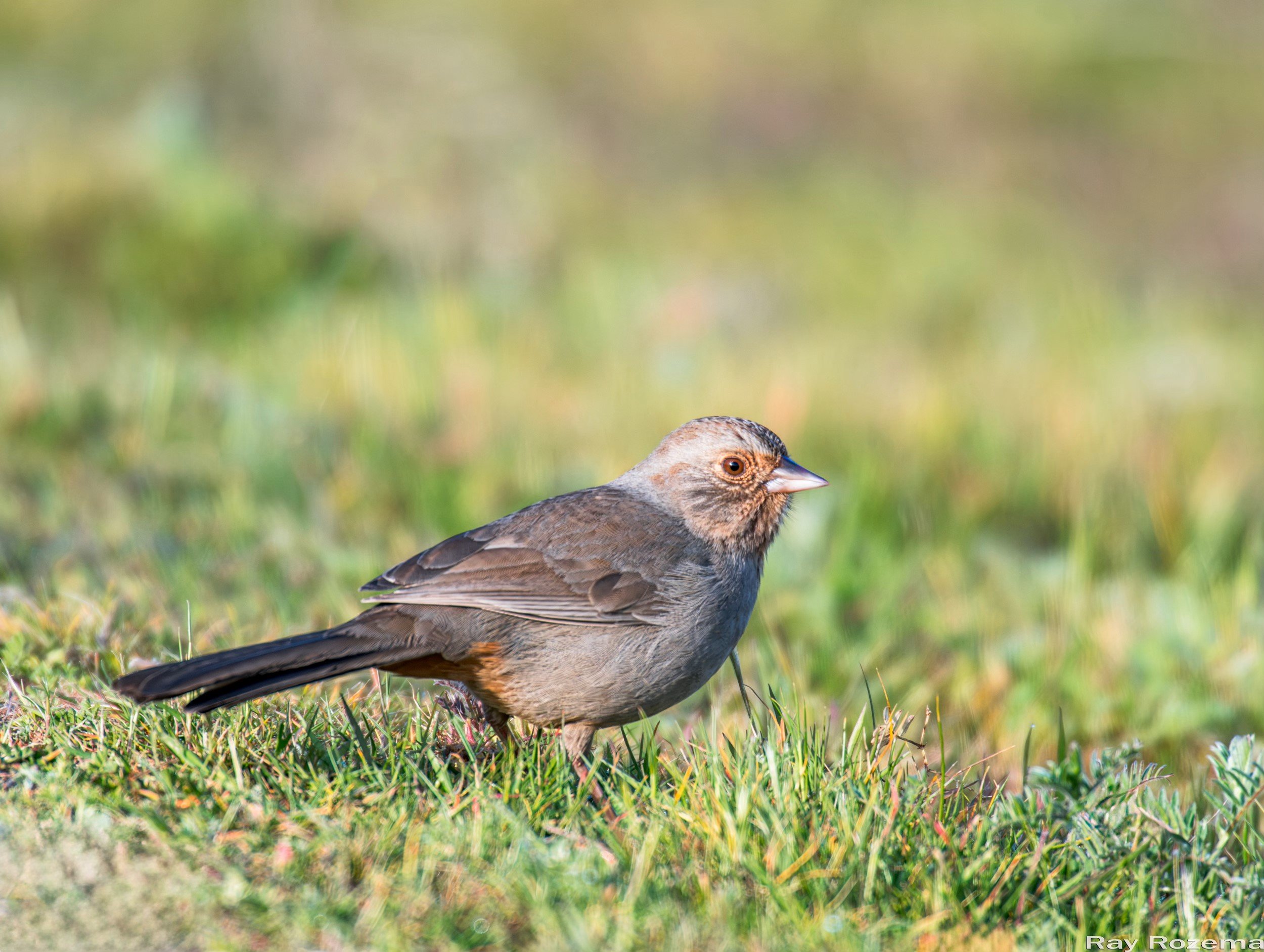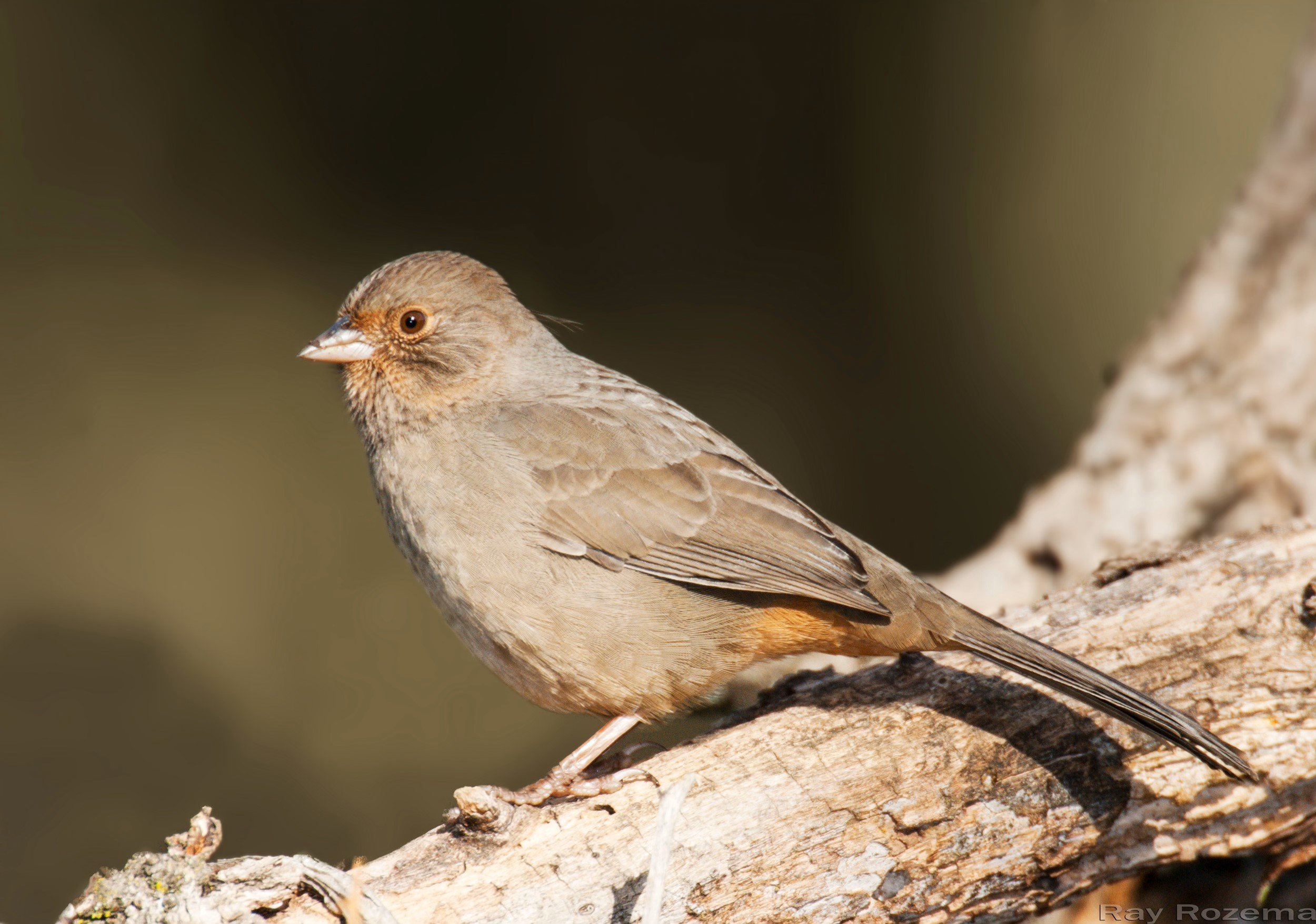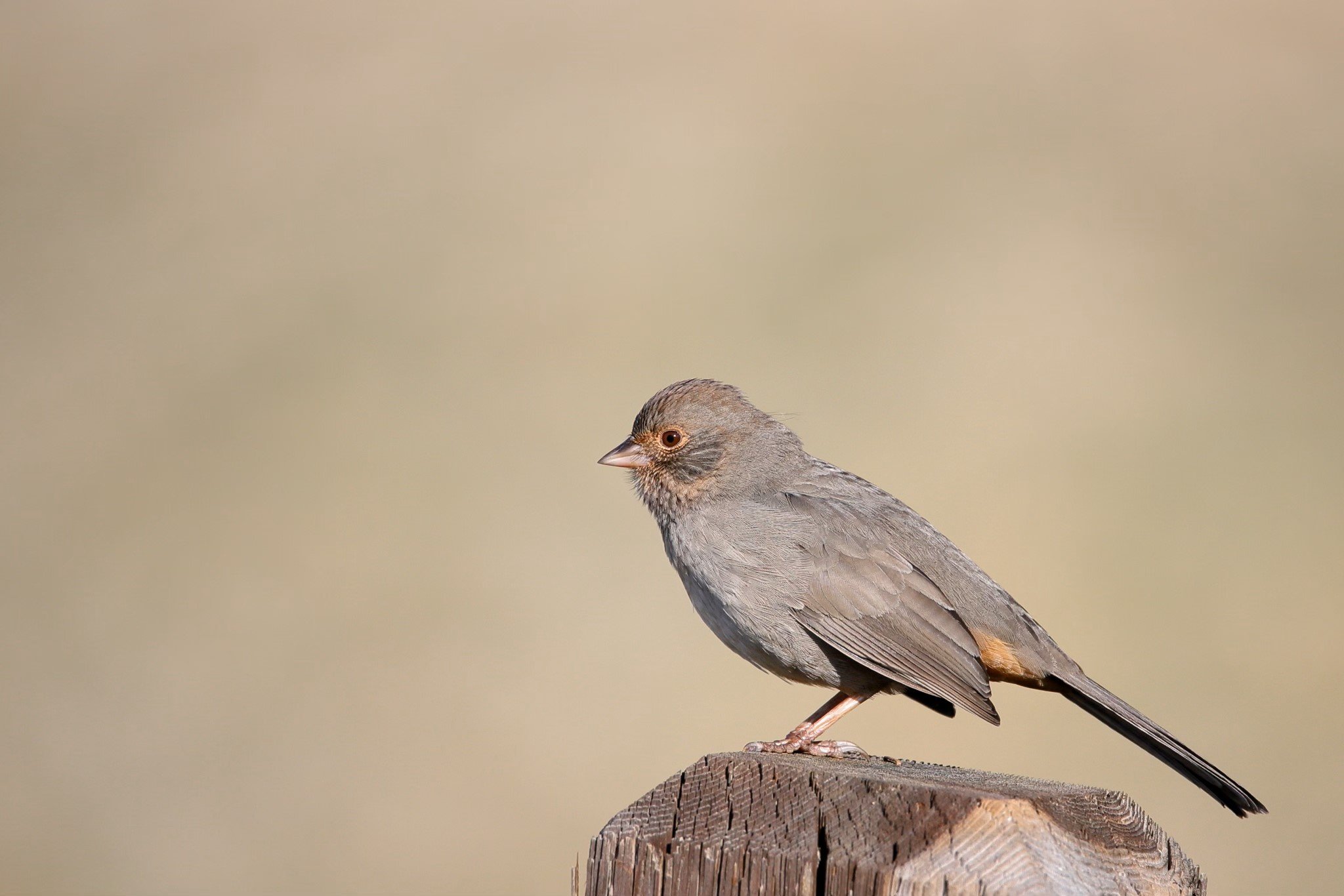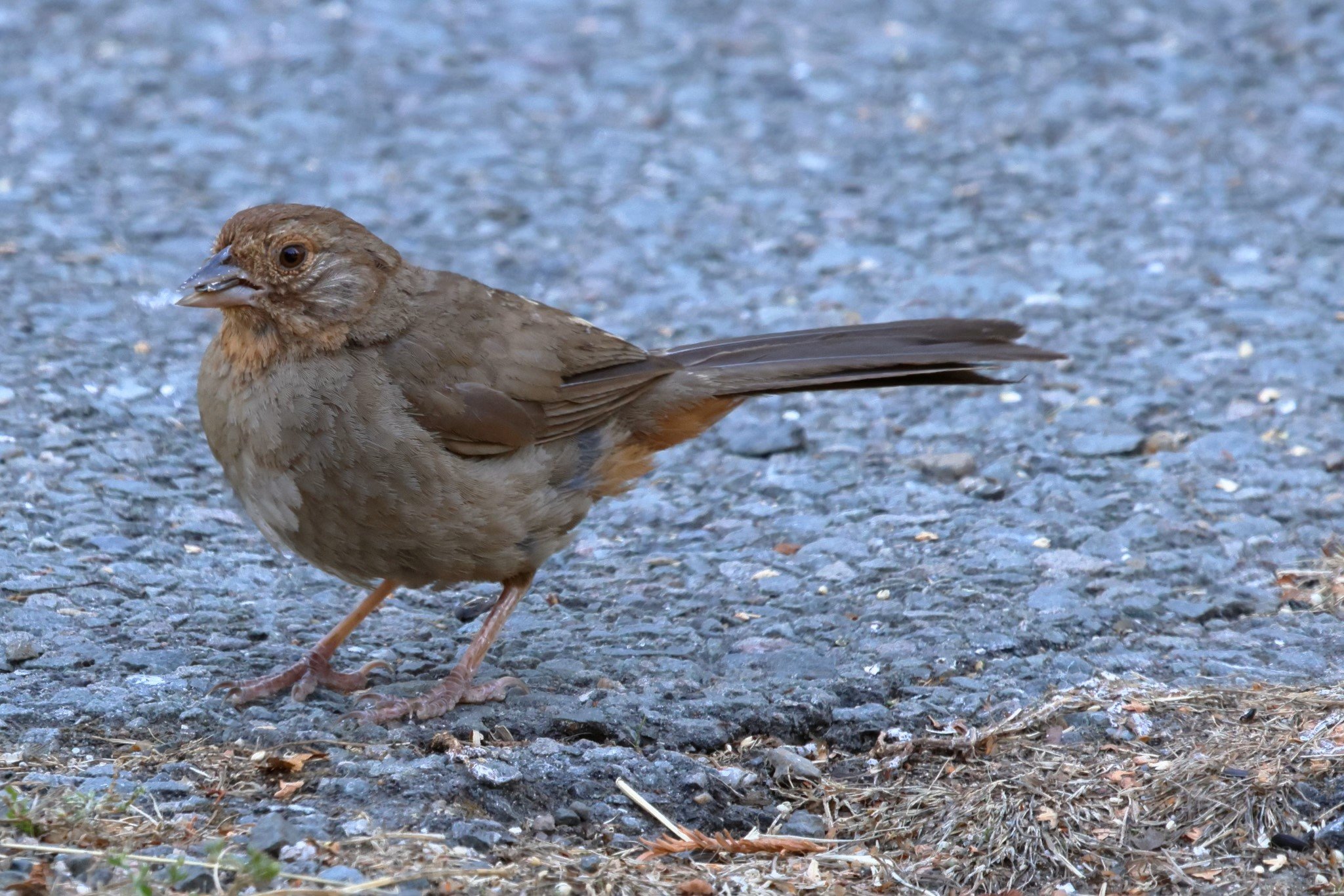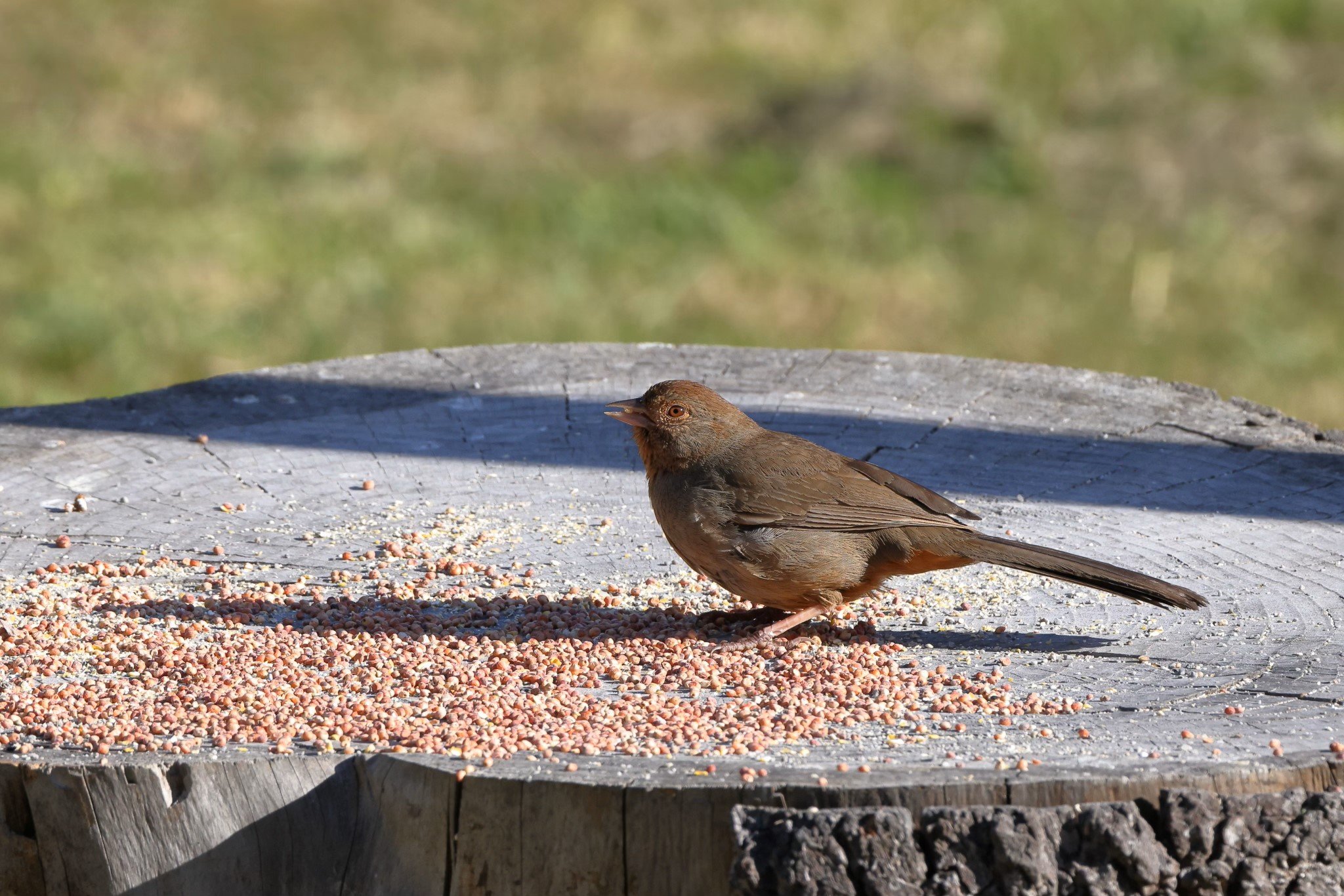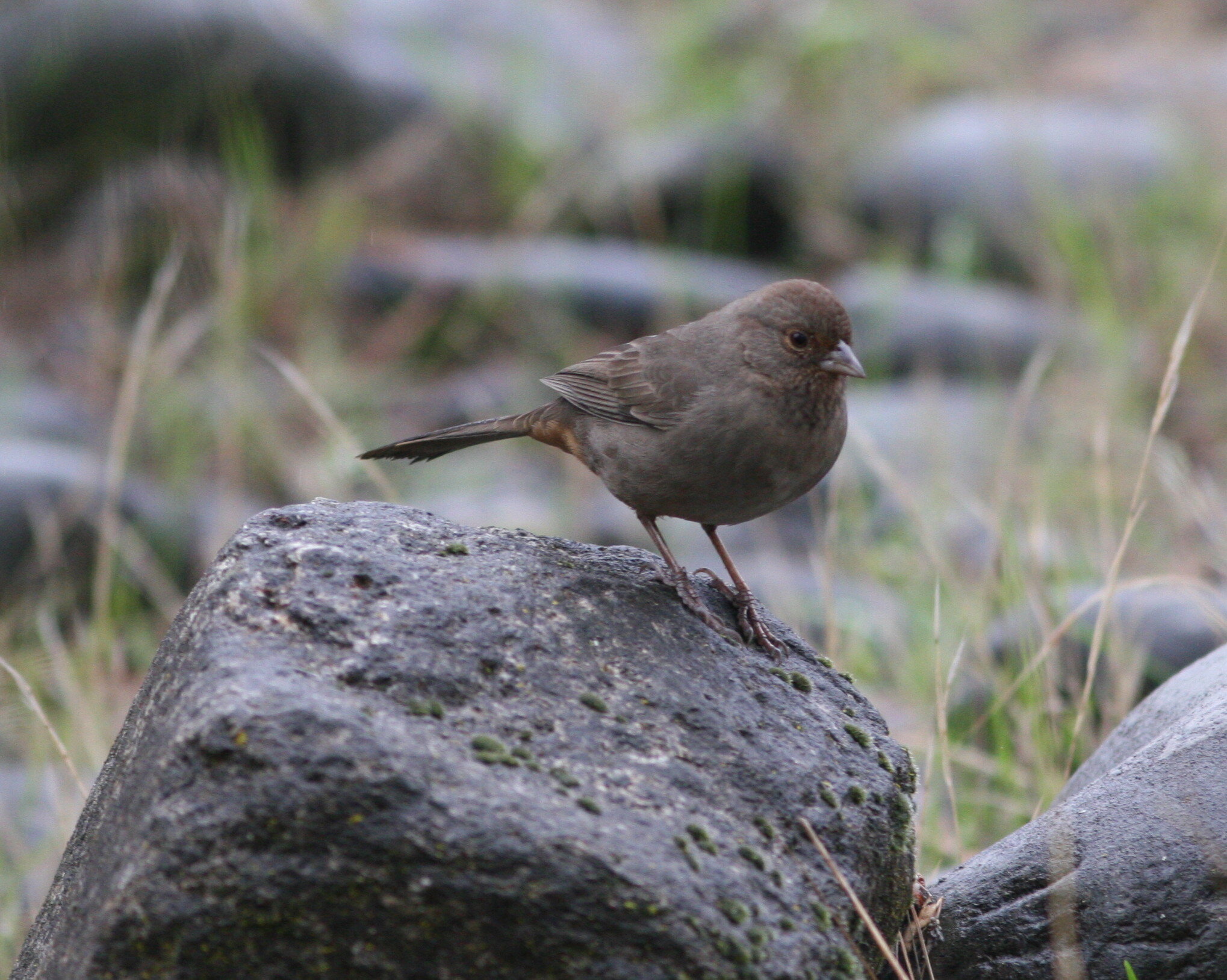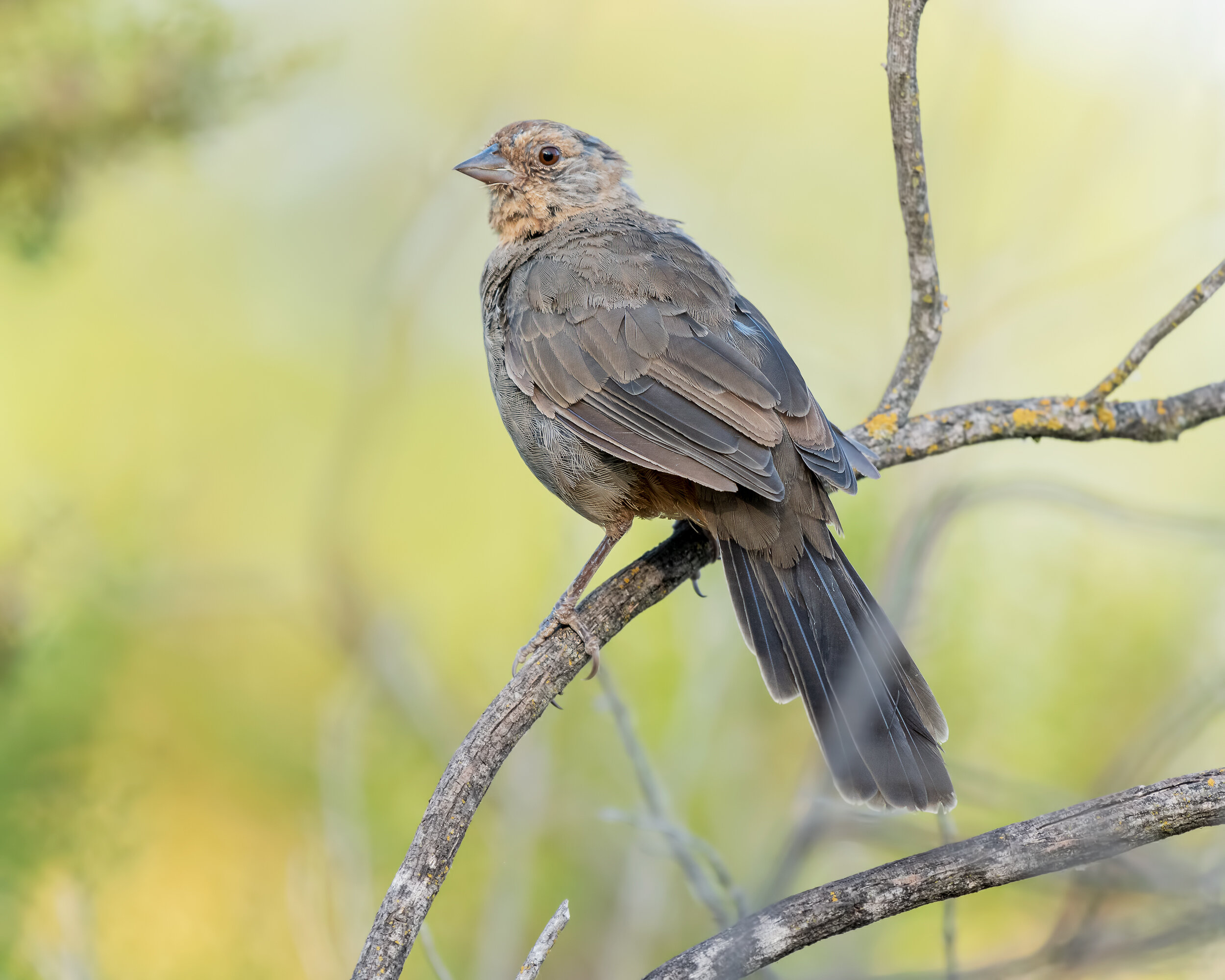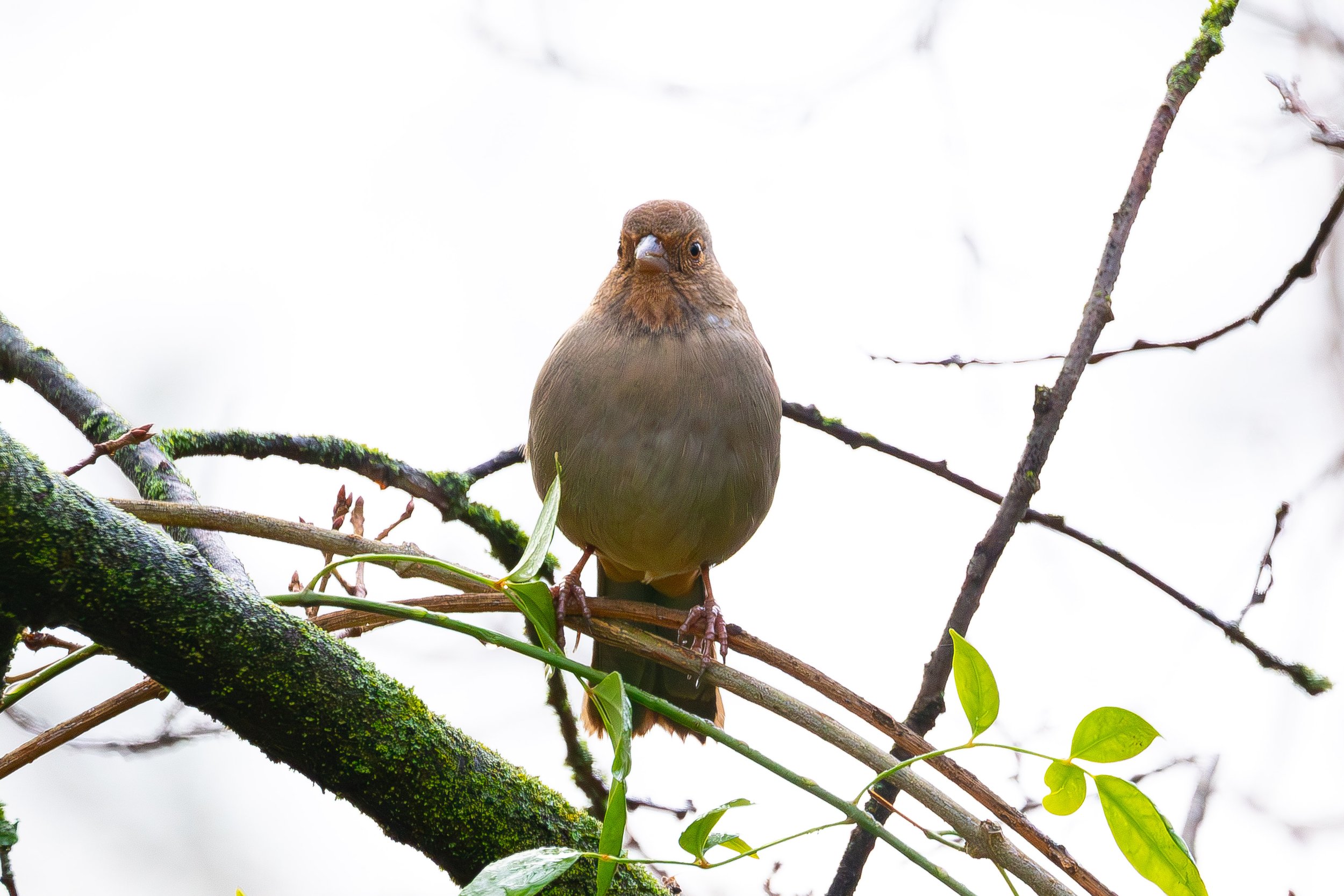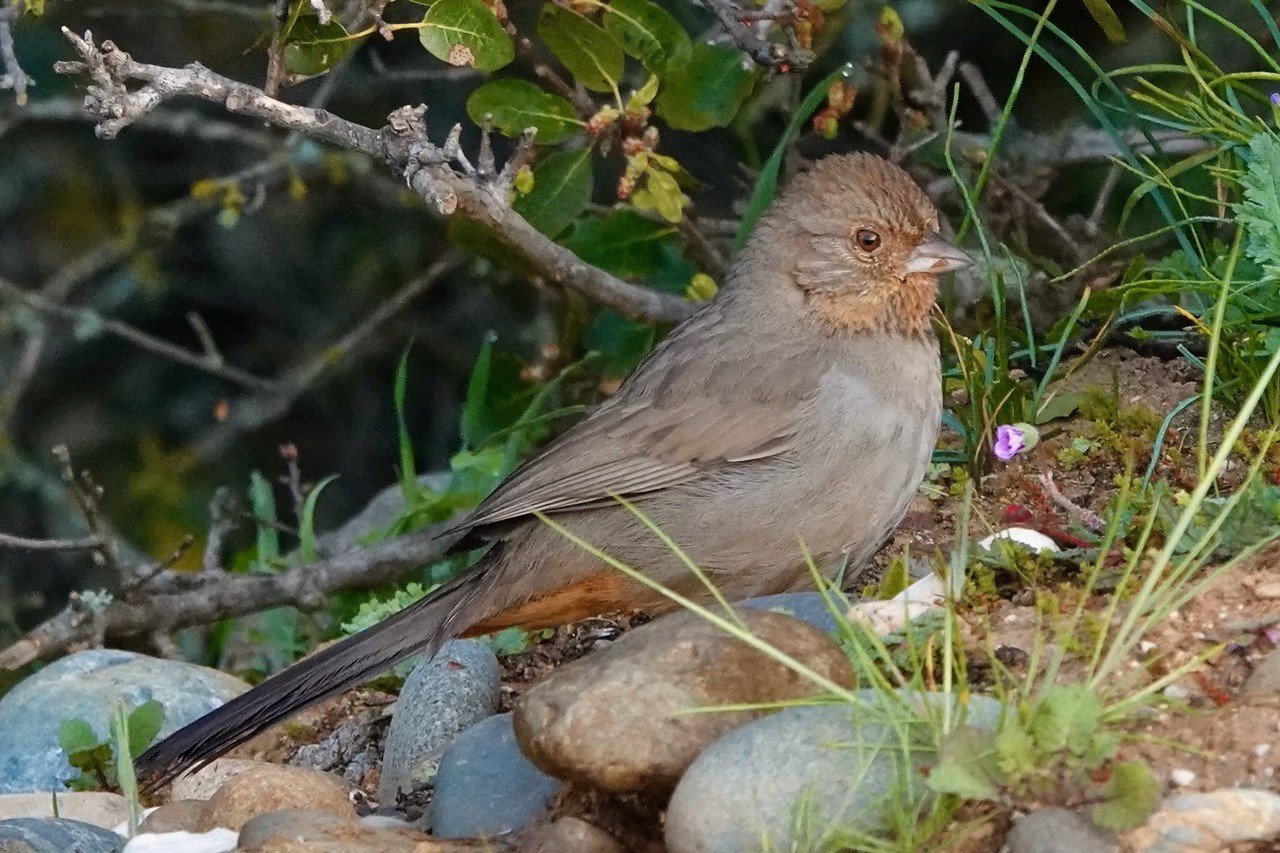Adult California Towhee, Image by Daniel Lee Brown
This month, let’s talk about a fairly common bird that is seen year-round in the Sacramento Valley, the California Towhee (Melozone crissalis). California Towhees are in the sparrow family. They are large, bulky, and non-migratory. In some regions, however, California Towhees will move from their low-land nesting areas to nearby foothill locations in late summer or fall. They are frequently spotted on the ground along roadsides or trails but are also seen in trees or on fences. California Towhees live in a variety of habitats and have adapted well to rural development and urbanization. Therefore, they are not only found in secluded natural habitats but also in urban and suburban yards. California Towhees are typically seen year-round in pairs due to their strong pair bond. The name towhee came about because its pronunciation is similar to that of a call made by another towhee species, the Eastern Towhee. Names created like this one are termed onomatopoeic (or imitative) names.
What do California Towhees look like?
California Towhee, Image by Craig Swolgaard
California Towhees are slightly smaller than American Robins. Male and female birds look alike; however the males are somewhat larger. California Towhees are mainly brown (or grayish-brown) overall, have thick bills, long tails, short wings, tiny dark spots in a broken ring pattern circling around their necks. They also have the characteristic orange-brown patches around their bills, under-tail feathers, and sometimes the face. The chests and abdomens of California Towhees are lighter in color and are mostly free of streaking. Juvenile birds look similar; but have faint wing bars and blurry, faint streaking on their chests.
Where do California Towhees live?
California Towhees are found in southern Oregon, western and central California, and western Mexico. Occasionally they are seen in eastern California. Their habitats vary and can be fairly dry or moist regions. California Towhees live in areas with streamside thickets (dense bushes), shady underbrush, in riparian areas (areas along rivers), parks, brushy patches in open woodlands, chaparral regions (habitat having mainly tangled shrubs and thorny bushes), coastal sage scrub, and canyon bottoms.
California Towhees build cup-shaped nests fairly low in bushes, vines, or small trees, typically 4-12 feet above the ground. The female builds the nest while the male watches over their territory. Poison oak is often used for nest sites. For the outside of their nests, female California Towhees weave together twigs, strips of bark, weeds, grass, dried flowers, and sometimes trash, such as plastic ribbons. Then the nest is lined with fine grass, rootlets, and animal hair. Female California Towhees lay 1–3 clutches (or groups of eggs) per year. While only the female incubates the eggs (sits on the eggs to keep them warm), both parents feed the nestlings. The young usually fledge (or leave) the nest about 8 days after hatching. Since the new fledglings are unable to fly, young birds will stay near their parents for several weeks. They begin to forage for food by themselves at 3 to 4 weeks old.
Because California Towhees are extremely protective of their nesting and food location sites, conflicts can happen with other pairs living close by. In addition, a California Towhee may endlessly peck or attack a reflection of themselves in a mirror or window thinking it is an actual rival. Covering the area may be the only way to get them to stop this behavior.
What do California Towhees eat?
California Towhee, Image by Larry Hickey
Seventy percent of the food eaten by California Towhees is found on the ground. California Towhees eat a variety of both weed and grass seeds. Their thick beaks make it easy to crack seeds. They also sometimes eat waste grain. They eat the berries of native plants including those of coffeeberry, elderberry, and poison oak. California Towhees will also eat edibles from the home garden such as stone fruits, lettuce, and peas. During the nesting season, California Towhees will eat live foods such as beetles, crickets, grasshoppers, caterpillars, spiders, and snails. Parents feed their young mainly insects. When foraging for food (looking for food) under leaves on the ground, they often use a double-scratching technique where they jump forward and then quickly jump backward. Edible morsels that pop up after this disturbance are quickly caught and consumed. When eating grass seeds, California Towhees hold onto a stem and strip the seeds off all at once with their beaks. In some parts of California they depend on native berries and/or cattle troughs for sources of water during the hot summer months.
What do California Towhees sound like?
California Towhees make a variety of sounds. One of their more distinctive calls has been described as a bright chip, a sharp ringing note, a loud metallic chip, a seet or seek, a tsip, a tink, and a chink. They also have a call that has been described as a thin tseeee.
The song of the California Towhee has been described as “a series of high-pitched notes” or “squeaky chips followed by an accelerating trill”. Pairs often call to each other (in duets) using a series of squealing sounds. Song patterns vary as to geographical area. You can listen to the California Towhee below.
These songs and calls of the California Towhee are from xeno-canto. More California Towhee vocalizations can be found at xeno-canto.org/species/Melozone-crissalis.
